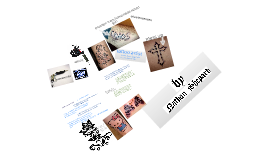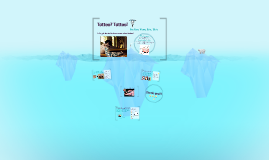tattoo
Transcript: During initial times tattoos were made by hands, but in 1891 the first electric tattoo machine was issued to the Irish tattooist Samuel O'Reilly at the United States Patent Office. He began his business as a "tattoo parlor" in New York City. This was the first tattoo studio in the United States. Soon the tattoo parlors became the trend in the United States of America. Then, during the First and Second World Wars, military of United States adopted tattooing as a means of protection and remembrance. Conventions, magazines, and other kinds of exposure, made tattooing popular in the country. -Cosmetic reasons -Religious reasons -Sentimental reasons -Identification of particular groups -Punishment -Medal for courage Tattoos breach the skin, which means that skin infections and other complications are possible. Specific risks include: -Allergic reactions. Tattoo dyes — especially red dye — can cause allergic skin reactions, resulting in an itchy rash at the tattoo site. This may occur even years after you get the tattoo. -Skin infections. Tattoos can lead to local bacterial infections, characterized by redness, swelling, pain and a pus-like drainage. -Other skin problems. Sometimes bumps called granulomas form around tattoo ink — especially red ink. Tattooing can also lead to raised areas caused by an overgrowth of scar tissue (keloids). -Bloodborne diseases. If the equipment used to create your tattoo is contaminated with infected blood, you can contract various bloodborne diseases, including hepatitis B, hepatitis C, tetanus and HIV — the virus that causes AIDS. -MRI complications. Rarely, tattoos or permanent makeup may cause swelling or burning in the affected areas during magnetic resonance imaging (MRI) exams. In some cases — such as when a person with permanent eyeliner has an MRI of the eye — tattoo pigments may interfere with the quality of the image. -Before the tattoo artists starts making the design on your body, make sure that he/she is using new, sterile disposable instruments. At the same time, ensure that he/she uses fresh ink for each session. -It is always advisable to look through the tattoo artist's portfolio. Through it, you will be able to see his work and ascertain whether he/she is really good or not. -Relax yourself completely before getting the tattoo made. If you are nervous and fidgeting too much, the artist will find it difficult to make the tattoo perfectly. -Insist on the tattoo artist to wash his/her hands with water and soap, or a standard sanitizing agent, and wear latex gloves, before making the design. -The tattoo artist must provide clear tattoo aftercare instructions and products. Do not forget to gather the information from him/her. Scabbing and Peeling After a few days, you will notice some peeling and possibly a little scabbing. Excessive scabbing could indicate a poorly-done tattoo, but a little is sometimes normal and there is no need to panic. Apply warm moist compresses to the scabs for about 5 minutes 2-3 times a day to soften them and they will eventually come off on their own. (Do not apply ointment or lotion to a softened scab - wait for it to dry) You will also start to itch, just like a sunburn when it begins to heal. The advice here is, don't pick, and don't scratch! If the skin itches, slap it. If it is peeling, put lotion on it. And if it is scabbing, just leave it alone. Your tattoo is almost healed, and now is not the time to ruin it! Is it OK to lay out in the sun or go to the tanning bed when you have tattoos? Tattoos - How Much Do They Really Hurt? Purposes Know the risks Tips to remember! History of tattoos

















